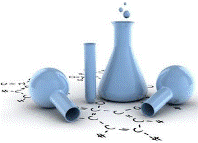Chemical and Biomolecular Engineering, Department of

Department of Chemical and Biomolecular Engineering: Faculty Publications
Date of this Version
2011
Document Type
Article
Citation
Biomaterials. 2011 January ; 32(1): 39–47.
Abstract
Synthetic hydrogel scaffolds that can be used as culture systems that mimic the natural stem cell niche are of increased importance for stem cell biology and regenerative medicine. These artificial niches can be utilized to control the stem cell fate and will have potential applications for expanding/differentiating stem cells in vitro, delivering stem cells in vivo, as well as making tissue constructs. In this study, we synthesized hyaluronic acid (HA) hydrogels that could be degraded through a combination of cell-released enzymes and used them to culture mouse mesenchymal stem cells (mMSC). To form the hydrogels, HA was modified to contain acrylate groups and crosslinked through Michael addition chemistry using non-degradable, plasmin degradable or matrix metalloproteinase (MMP) degradable crosslinkers. Using this hydrogel we found that mMSC proliferation occurred in the absence of cell spreading, that mMSCs could only spread when both RGD and MMP degradation sites were present in the hydrogel and that mMSCs in hydrogels with high density of RGD (1000μM) spread and migrated faster and more extensively than in hydrogels with low density of RGD (100μM).


Comments
© 2010 Elsevier Ltd. All rights reserved. Used by permission.